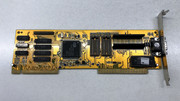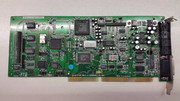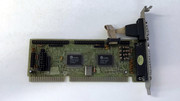First post, by appiah4
- Rank
- l33t++
I am finalizing the setup of my 486 DX33 and I'm having a strange issue.
Windows 3.x won't start with EMM386 loaded unless I exclude the ENTIRETY of C000-F7FF range.
Believe me, I've tried trimming that block from either end, or trying to find holes in it, it doesn't work.
I've used MSD to check and it shows C000-C7FF and F7FF-FFFF as reserved for ROM and the rest being available for UMB, and the computer works perfectly with just NOEMS HIGHSCAN X=C0000-C7FF but Windows 3.x won't load, it hangs after splash screen.
The only ways I got Windows to work are:
A) X=C000-F7FF
B) WIN /S
Neither of which is ideal. I tried 3.1 and 3.11 for Workgroups.
I'm using Ontrack Disk Manager if that's relevant.
Otherwise, I'm completely stumped.
(The CPU I am using is lacking one pin, S1 (A27) in case that's also relevant)
Someone please help 🙁
AUTOEXEC.BAT and CONFIG.SYS below..
@ECHO OFFPROMPT $p$gPATH C:\WINDOWS;C:\DOS;C:\UTILS\VC;C:\COMPRESS\PKZIP250SET TEMP=C:\DOSLH C:\DOS\MSCDEX.EXE /S /D:OPTICALLH C:\DRIVERS\CTMOUSE.EXE /R2LH C:\DOS\DOSKEY.COMLH C:\DOS\SMARTDRV.EXE /X
BUFFERS=40,0FILES=40DOS=UMBLASTDRIVE=HFCBS=4,0DOS=HIGHSTACKS=9,256DEVICE=C:\DOS\HIMEM.SYS /TESTMEM:OFFDEVICE=C:\DOS\EMM386.EXE NOEMS HIGHSCAN X=C000-C7FFDEVICEHIGH=C:\DRIVERS\VIDECDD.SYS /D:OPTICAL
Retronautics: A digital gallery of my retro computers, hardware and projects.



